Reviews of products by Ken de Courcy
2 ★★★★★ reviews
2 ★★★★★ reviews
1 ★★★★★ reviews
The Systematic Seer
Overall customer rating: ★★★★★reviewed by Gregg Webb (confirmed purchase)
Rating: ★★★★★ (Date Added: Sunday 19 October, 2025)
 This is one of the best ways to add more keywords to your readings for people, and you won't be at a loss groping for where to start or thinking of the perfect words to use. This is another book you can keep returning to to improve your readings.
This is one of the best ways to add more keywords to your readings for people, and you won't be at a loss groping for where to start or thinking of the perfect words to use. This is another book you can keep returning to to improve your readings.
The Systematic Seer
Overall customer rating: ★★★★★reviewed by David Hughes (confirmed purchase)
Rating: ★★★★★ (Date Added: Monday 15 September, 2025)
 It's short, but the concept it teaches really makes cold reading easier.
It's short, but the concept it teaches really makes cold reading easier.
The Systematic Seer
Overall customer rating: ★★★★★reviewed by Christopher M. Reynolds (confirmed purchase)
Rating: ★★★★★ (Date Added: Tuesday 13 August, 2024)
 I live in California, where the recreational use of marijuana is legal. I smoke a lot of pot - vast, Cheech & Chong-level amounts of pot. With that said, my memory isn't what it used to be. I can barely remember the last sentence I wrote. Thank goodness for Ken de Courcy.
I live in California, where the recreational use of marijuana is legal. I smoke a lot of pot - vast, Cheech & Chong-level amounts of pot. With that said, my memory isn't what it used to be. I can barely remember the last sentence I wrote. Thank goodness for Ken de Courcy.
Genius often lies in the simplicity of great art. The secret method behind Ken de Courcy's "The Systematic Seer" is simple, almost to the point of being insulting. It's as easy as remembering a phone number, and that's no hyperbole.
It's not a magic trick but a complete method of stress-free divination for those new to the art or easily tongue-tied while attempting to spout some silver-tongued psychic rhetoric.
When I first learned the secret method, I felt cheated out of my seven dollars. But it was only jealousy. I was mad that I hadn't thought of it myself.
The Systematic Seer was released in 1976. Since then, other writers and performers (like The Deceptionary's Doug Dyment) have taken de Courcy's idea and expanded on it. But the original suits me fine.
After a few hours of memorization, I put it into practice.
Sometimes, I read palms on my lunch break at work. Making up bullshit off the top of your head every day can be exhausting. Using the Systematic Seer method, I could give instant readings to people after learning only their first names.
Like I said, once you learn the secret, you'll hate yourself for buying it. But the results are fantastic if you put the information into practice (like I did).
Whether you're a mentalist, magician, or fortune teller, you'll want to add this to your repertoire. The only prop you need to carry around is your memory.
Buy it. Use it. This works.
Mentelimination Plus
Overall customer rating: ★★★★★reviewed by Marc Rehula (confirmed purchase)
Rating: ★★★★★ (Date Added: Tuesday 18 April, 2023)
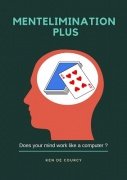 Very clever working of this type plot, where you sincerely find a card that is missing in the pack. However, this is not a self-working routine. It's not necessarily difficult, but it will require that you devote much time to practice - the more you practice, the smoother and speedier the routine will flow.
Very clever working of this type plot, where you sincerely find a card that is missing in the pack. However, this is not a self-working routine. It's not necessarily difficult, but it will require that you devote much time to practice - the more you practice, the smoother and speedier the routine will flow.
Calling all Cards
Overall customer rating: ★★★★★reviewed by Dan Sherer (confirmed purchase)
Rating: ★★★★★ (Date Added: Sunday 20 February, 2022)
 An interesting routine, and probably worked as written when it came out. However, in order to work it now, you would need to rethink a few of the cards as they either look radically different or just aren't really in use. As to method, well, you probably know what it is if you read the description of the effect, and I will say that unfortunately there aren't any particular insights on the method at least as far as playing cards are concerned.
I think it was probably excellent when it came out, but you would need to do a lot of work if you wanted to do it now.
An interesting routine, and probably worked as written when it came out. However, in order to work it now, you would need to rethink a few of the cards as they either look radically different or just aren't really in use. As to method, well, you probably know what it is if you read the description of the effect, and I will say that unfortunately there aren't any particular insights on the method at least as far as playing cards are concerned.
I think it was probably excellent when it came out, but you would need to do a lot of work if you wanted to do it now.
Pentertain
Overall customer rating: ★★★★★reviewed by Christian Fisanick (confirmed purchase)
Rating: ★★★★★ (Date Added: Wednesday 06 October, 2021)
 When I saw this series from Ken de Courcy, I didn't know what to think. Books of mathematical tricks using pen and paper? But with the impulse purchase, I found out. Pentertain, the first book in the trilogy, has six tricks: the old "life force," a matrix trick, two entertaining ways to multiple two two-digit numbers, a telephone number trick that has a method that I'd previously seen for currency serial numbers, and a goofy mathematical oddity that Devin Knight put out as a separate manuscript. The second book, Son of Pentertain, has six more things, five of which I don't think are very good and a variation on the old Martin Gardner tic-tac-toe gambit that folks like Richard Osterlind and Johnny Thompson have used. Mistress of Pentertain, the third and longest book, has 25 tricks and gags that are a real mixed bag with a lot of junk. I'd give Pentertain 3/5, Son of Pentertain 2/5, and Mistress of Pentertain 2.5 out of 5. There are things of interest amidst the dross, but be forewarned: de Courcy wrote these books in a different time--almost 50 years ago--so there is a lot of offensive and blue material. If you're going to use some of these things, you're going to have to rework the patter. Otherwise, you'll never pentertain--or entertain--in public again.
When I saw this series from Ken de Courcy, I didn't know what to think. Books of mathematical tricks using pen and paper? But with the impulse purchase, I found out. Pentertain, the first book in the trilogy, has six tricks: the old "life force," a matrix trick, two entertaining ways to multiple two two-digit numbers, a telephone number trick that has a method that I'd previously seen for currency serial numbers, and a goofy mathematical oddity that Devin Knight put out as a separate manuscript. The second book, Son of Pentertain, has six more things, five of which I don't think are very good and a variation on the old Martin Gardner tic-tac-toe gambit that folks like Richard Osterlind and Johnny Thompson have used. Mistress of Pentertain, the third and longest book, has 25 tricks and gags that are a real mixed bag with a lot of junk. I'd give Pentertain 3/5, Son of Pentertain 2/5, and Mistress of Pentertain 2.5 out of 5. There are things of interest amidst the dross, but be forewarned: de Courcy wrote these books in a different time--almost 50 years ago--so there is a lot of offensive and blue material. If you're going to use some of these things, you're going to have to rework the patter. Otherwise, you'll never pentertain--or entertain--in public again.
Even Stephen
Overall customer rating: ★★★★★reviewed by Dave Arch (confirmed purchase)
Rating: ★★★★★ (Date Added: Thursday 20 June, 2019)
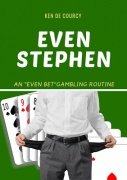 Thank you Chris for salvaging this collection of prop bets with cards where the odds aren't anywhere near what they seem. Many were new to me, and I sure had never seen them routined together like Ken did here.
Thank you Chris for salvaging this collection of prop bets with cards where the odds aren't anywhere near what they seem. Many were new to me, and I sure had never seen them routined together like Ken did here.
The Red and Black Computation
Overall customer rating: ★★★★★reviewed by Alan Meyers (confirmed purchase)
Rating: ★★★★★ (Date Added: Friday 07 December, 2018)
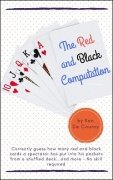 This is, as I suspected before buying it, a reworking of Bob Hummer's trick "Little Stranger." Devin Knight has recently published his own version of Little Stranger. It's an interesting mathematical trick in both De Courcy's version and Knight's, but I prefer De Courcy's because it provides an excuse for a necessary but somewhat prolonged looking through the deck at one point in the trick, and because it has a better climax.
This is, as I suspected before buying it, a reworking of Bob Hummer's trick "Little Stranger." Devin Knight has recently published his own version of Little Stranger. It's an interesting mathematical trick in both De Courcy's version and Knight's, but I prefer De Courcy's because it provides an excuse for a necessary but somewhat prolonged looking through the deck at one point in the trick, and because it has a better climax.
It's Knot Impossible
Overall customer rating: ★★★★★reviewed by tommaso percivale (confirmed purchase)
Rating: ★★★★★ (Date Added: Wednesday 08 June, 2016)
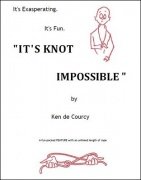 Well, the price is very low so it's not a big issue but... I already knew this trick and i was looking to transform it into an effect. I hoped to find a fresh routine, something funny, even brilliant but... this is not the case. It's flat and uncharming, something that don't resolve the slightly boring soul of this trick. Even worse: the routine don't have an ending because the author continued with another routine (not showed in the doc).
To me it's like a quick cut and paste of a very old and uninspiring material.
Well, the price is very low so it's not a big issue but... I already knew this trick and i was looking to transform it into an effect. I hoped to find a fresh routine, something funny, even brilliant but... this is not the case. It's flat and uncharming, something that don't resolve the slightly boring soul of this trick. Even worse: the routine don't have an ending because the author continued with another routine (not showed in the doc).
To me it's like a quick cut and paste of a very old and uninspiring material.
Is this an interesting trick? Yes Is this the best way to learn it? I don't think so.
33 Tricks with the PATEO Force
Overall customer rating: ★★★★★reviewed by Christian Fisanick (confirmed purchase)
Rating: ★★★★★ (Date Added: Sunday 17 April, 2016)
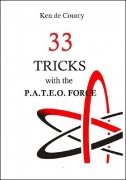 This is a no-brainer. Every mentalist needs to know how to do a PATEO force. You get 33 routines here, at 30 cents a routine. That's a bargain.
This is a no-brainer. Every mentalist needs to know how to do a PATEO force. You get 33 routines here, at 30 cents a routine. That's a bargain.
Count Down
Overall customer rating: ★★★★★reviewed by Jack McCoy
Rating: ★★★★★ (Date Added: Tuesday 03 June, 2014)
 'Count Down' is a great trick and well worth the small price. The routine is simplicity in itself, you'll never forget it and the method for the most part is self working. The deck can be borrowed, providing it's a full deck.
'Count Down' is a great trick and well worth the small price. The routine is simplicity in itself, you'll never forget it and the method for the most part is self working. The deck can be borrowed, providing it's a full deck.